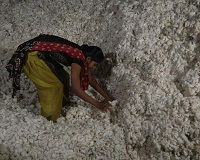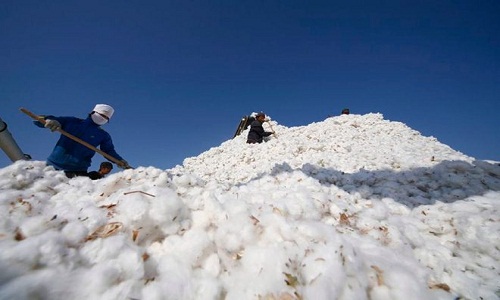"World cotton production declined in 2018 to an estimated 118.4 million bales due to lower acreage and yields. The US was not the only country plagued by weather and pest issues in 2018. As compared to 2017, India’s crop declined by 2.0 million bales. Australia harvested 43.4 per cent less acreage in 2018 due to severe drought conditions, resulting in a 2.2 million bale reduction as compared to 2017. Pakistan’s production also fell 950,000 bales. The 19.1 per cent increase in Brazil’s cotton acreage in 2018 did offset some of the production losses experienced in other countries. Brazil produced a record 11.0 million bales, an increase of 1.8 million bales over 2017."
 Year 2018 was full of uncertainty and volatility for the world cotton market. This uncertainty surrounding the ongoing trade tensions between the United States and China, is one of the most challenging issues facing the global cotton market today. Last month, the two countries concluded a round of talks aimed at resolving the dispute with further discussions planned for mid-February. President Trump had set March 1st for either resolving the trade issues or increasing tariffs applied to approximately $200 billion of imports from China. Based on the positive statements resulting from the recent negotiations, the NCC assumes that the additional tariffs being imposed by the two countries will be removed in advance of the 2019 marketing year. With exact timing unknown, the ultimate resolution is not assumed to have a significant impact on the balance sheet for the 2018 marketing year.
Year 2018 was full of uncertainty and volatility for the world cotton market. This uncertainty surrounding the ongoing trade tensions between the United States and China, is one of the most challenging issues facing the global cotton market today. Last month, the two countries concluded a round of talks aimed at resolving the dispute with further discussions planned for mid-February. President Trump had set March 1st for either resolving the trade issues or increasing tariffs applied to approximately $200 billion of imports from China. Based on the positive statements resulting from the recent negotiations, the NCC assumes that the additional tariffs being imposed by the two countries will be removed in advance of the 2019 marketing year. With exact timing unknown, the ultimate resolution is not assumed to have a significant impact on the balance sheet for the 2018 marketing year.
Production to increase in 2019
World cotton production declined in 2018 to an estimated 118.4 million bales due to lower acreage and yields. The US was not the only country plagued by weather and pest issues in 2018. As compared to 2017, India’s crop declined by 2.0 million bales. Australia harvested 43.4 per cent less acreage in 2018 due to severe drought conditions, resulting in a 2.2 million bale reduction as compared to 2017. Pakistan’s production also fell 950,000 bales. The 19.1 per cent increase in Brazil’s cotton acreage in 2018 did offset some of the production losses experienced in other countries. Brazil produced a record 11.0 million bales, an increase of 1.8 million bales over 2017. For 2019, production is expected to increase in most major cotton producing countries. World production is estimated at 125.5 million bales.
Consumption to reach 126.5 million bales
World cotton consumption is expected at 123.6 million bales in 2018 marketing year. Estimates have been revised downward due to the ongoing trade dispute as well as a slowdown in the Chinese and world economies. For 2019, consumption is expected to increase to 126.5 million bales.
slowdown in the Chinese and world economies. For 2019, consumption is expected to increase to 126.5 million bales.
Consumption to exceed production in 2019
Cotton consumption exceeded production by 5.1 million bales in the 2018 marketing year. Ending stocks declined to 75.5 million bales. Stocks outside of China increased to a record 46 million bales. The world production is estimated to increase by 7 million bales in 2019 to 125.5 million bales, which would be the highest level since the 2011 crop. World consumption is projected to increase to 126.5 million bales in 2019. Ending stocks are projected to decline to 74.2 million bales. Stocks outside of China are projected to increase to a record 46 million bales.
While the Council’s economic outlook does not attempt to project cotton prices, it is important to review some of the factors shaping the current price situation. Cotton prices maintained a weaker appearance since August 2018 due to the U.S.-China trade dispute as well as a slowdown in the world economy. Based on the underlying assumptions and resulting cotton balance sheet, the level of stocks outside China in the 2018 marketing year along with higher projected production in 2019 may contribute to a more bearish tone for cotton prices in the next year. However, the increase in world trade due to higher Chinese imports along with a resolution to the U.S.-China trade dispute could provide some price support.












